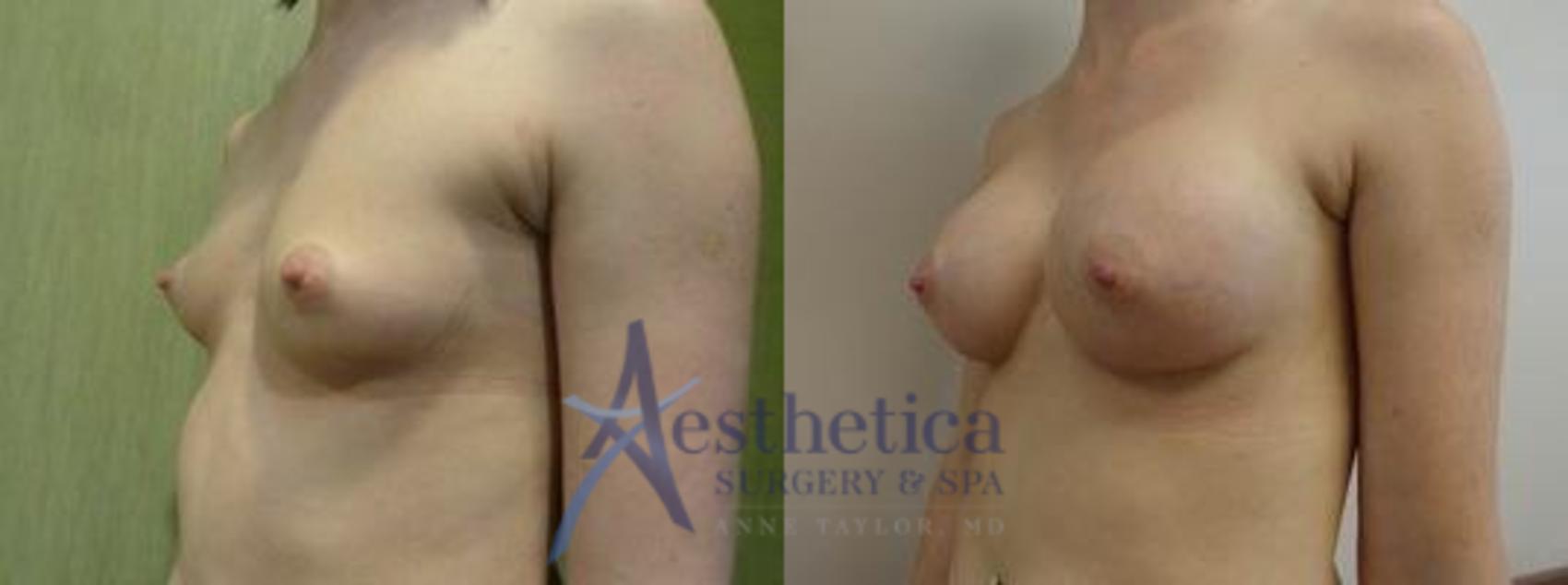Do you feel like your breasts are not shaped the way you see other women’s breasts shaped? Are they long and pointy with the nipple pointing down? Do the areola and nipple look puffy and funny? If you have answered yes to any of these questions, you may have a type of breast anatomy termed tuberous or tubular breasts.
This is a breast condition I often see at my Columbus plastic surgery office, Aesthetica. Treating this type of breast shape is a specialty of mine, and I enjoy helping my patients reach their goals of a better breast shape. In this blog, I will discuss the wide range of breast shapes that fall into the larger category of tuberous breasts and discuss their unique treatment options.
Why is it called tuberous?
The term tuberous breast was coined by plastic surgeons in the ‘70s because the breast often resembled a tuber—or root, as in potato! There are many varieties of this anatomy, but in the smallest type, the breast shape is a small nub or bump, like a tuber. The name stuck, and despite the huge variation in types, this name has become embedded in our language and discussion of this spectrum of findings. For the readers who like to dig into this, please follow these links to learn about the classification systems used by plastic surgeons.
Main Types of Tuberous Breast Anatomy
The classification systems for tuberous breast anatomy help direct the treatment options.
- To start with type 1, the breast tissue is directly behind the areola and pushes out—making the areola skin look puffy. When there is more breast tissue, it can protrude and make the areola quite large and very pointy looking. Included with this type is the finding of a very narrow base width of breast tissue, resulting in more tissue behind the areola and the resulting protrusion.
- The second type of findings in this classification, grade 2, includes diminished tissue in the medial quadrant of the side of the breast closest to the sternum.
- Additional findings in the grade 3 type include a high, tight inframammary fold. Some patients may have different types of anatomy on each side, further complicating the treatment plan.
Surgical Treatment of Tubular Breasts
For patients who have the mildest type of tuberous breasts, it often can be resolved in a single operation. For the more severe cases, I often tell my patients that we will try to hit a home run in one operation but to prepare to end up on second or third base and need another chance to get to home base.
The treatment usually involves a combination of breast augmentation, breast lift surgery (mastopexy), and scoring the native breast tissue to allow it to expand or fan out into a broader base footprint. When there are two different breast sizes, using two different sizes of implants can be the answer, and sizers can be employed to determine the best match.
When the areola has been stretched out and the tissue behind it protrudes, a donut mastopexy can be done to make the size smaller and push the protruding tissue back down. Often, this is only done on one side because it is very common to have very different types of tuberous breasts on the same patient.
Surgical Considerations
As with any breast augmentation, there are many choices of implants to consider, and since this type of anatomy is even more complicated, the choice is even more important.
Breast Implant Types
When looking at breast implants, I strongly recommend my Columbus, Ohio, patients select the cohesive silicone gel implants because this will give them the most natural result in both how they look and feel. Because there often are two different sizes used, it is even more important to use silicone gel.
Implant Placement
The choice of pocket–either under the muscle or on top–is another conversation, and it has many inputs to consider, including the age of the patient and BMI. This is a topic that is covered in the consultation, when we will look at the multiple styles and options.
How much time should I take off work after tubular breast surgery?
If a mastopexy is included, the healing can take a few extra days, but in general, about one week off work is enough for most jobs. It takes most patients about a month to feel normal again. All of the details about the recovery process are covered at the pre-operative visit when you will have time to ask all the questions you have considered.
From the most mild to the most severe cases, patients who have tuberous breasts have many options, and the result will be a lovely improvement. Most of my patients have wondered why their breasts looked so different and did not know this is an actual anatomical variation that has been well documented for many decades. The treatment options have improved greatly over the last decades, as well, with the choices of implants. Using the best techniques and best implants for each patient can often yield a result that looks as if there was no tuberous breast.
If you would like to discuss your breast surgery options, request a consultation using our online form or call our office at (614) 569-2649 to schedule an appointment.
Breast Wishes!








Leave a Reply